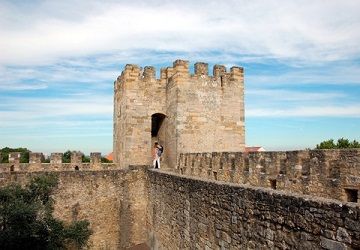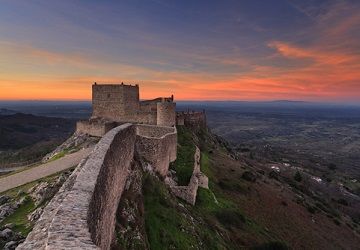Portugal's Castles Capture the Childhood Imagination
In February, March and April, flowers and almond blossoms bloom and temperatures remain moderate, making the destination perfect for a spring break visit.

Castelo de São Jorge (Saint George's Castle) in Lisbon, Portugal
Castles and royalty intrigue kids. Lisbon (Lisboa in Portuguese) and the Alentejo region, an hour’s drive away, intrigue kids with their princely abodes and ancient cities. In summer, sunny Portugal’s cities can feel too hot and dry for kids craving beaches and sand. In February, March and April, flowers and almond blossoms bloom and temperatures remain moderate, making the destination perfect for a spring break visit.
Lisbon
The port made Lisbon — and Portugal — powerful in the 15th century. During this “Age of Discovery,” ships sailed from Lisbon’s harbor to the New World in search of gold and glory. The warmest and westernmost capital in Europe, Lisbon rises on seven hills situated along the Tejo River and its confluence with the Atlantic Ocean.
Get a sense of the city during its medieval prime by strolling the cobblestone streets of Alfama, a centuries-old neighborhood once populated by nobles. It’s fun to search for the family coats of arms fronting the 16th to 18th century houses. Along the winding streets, you pass shops, cafes, old churches and even vendors selling canaries.
The high, stone walls of the Alfama’s Castelo de São Jorge (Saint George’s Castle) testify to its 5th century beginnings as a fortress. Although an earthquake destroyed the original castle, the structure has been rebuilt. Peacocks stroll the gardens and you can pace the ramparts for a scenic city and water view.

The castle of Marvão in the Alentejo region of Portugal
Alentejo Region
For centuries, mountains, wheat, water and castles were the elements of survival in Portugal’s Alentejo region on the border with Spain. Within an hour’s drive of Lisbon, the Alentejo stretches from the banks of the Rio Tejo (Targus River) south to the mountains of the Algarve. On the fertile plains farmers still tend cork tree forests and grow wheat. And for centuries, rulers bolstered their kingdom’s safety by building mountain fortresses.
Marvão is a walled medieval village. Its castle, set defiantly atop a rocky 2,837-foot pinnacle, soars above the surrounding countryside. On a clear day you might see Spain’s mountains fewer than 5 miles to the east, as well as Portugal’s peaks.
Marvan, a Moorish king of Coimbra, built the first fortress at this site in the 8th century. After successive kings, battles and “renovations,” the castle was transformed again in 1640 following Portugal’s independence from Spain. For more than two centuries, Marvão’s walls withstood the Spanish. Marvão, whose last battle took place in 1830 during Portugal’s Civil War, rates as one of Portugal’s best-preserved, still-inhabited, walled medieval villages with a standing castle. Your kids will be impressed.
Follow Candyce H. Stapen on Twitter: @FamilyiTrips
ACTIVA BioACTIVE Bulk Flow Marks Pulpdent’s First Major Product Release in 4 Years
December 12th 2024Next-generation bulk-fill dental restorative raises the standard of care for bulk-fill procedures by providing natural remineralization support, while also overcoming current bulk-fill limitations.